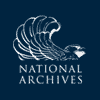George Washington to Catharine Littlefield Greene, 22 March 1781
To Catharine Littlefield Greene
New Windsor Mar. 22d 1781.
Dear Madm
My last, written in an hour of haste from Providence would inform you of my disappointment in not havg the pleas[ur]e of seeing you in the course of my trip to R. Island1—Since my arrival at this place2 I have received a letter from Genl Greene of the 28th Feby (with the inclosed to you) informing me that Lord Cornwallis was retreating & that he was advancing; but the end & design of the retrograde movement of the enemy was not, at that time, sufficiently unfolded.3
I have also been hond with your favor of the 26th of Feby & find by the letter to Mrs Washington that you have it in contemplation to make a journey to the Southward.4 I can neither advise you to, nor disswade you from the measure, because the true footing (if you will allow me the freedom to say so) upon which the journey should depend is, in my opinion, the encouragement given to it by Genl Greene; who having a view of all circumstances before him, can alon⟨e⟩ determine the propriety of it.5
Mrs Washington is not yet returned from albany6—or she would, I am sure, salute you with as much warmth & cordiality as does Dr Madam Yr Most Obedt Servt
Go: W.
ADfS, DLC:GW; Varick transcript, DLC:GW. Greene replied to GW on 29 March.
1. A fragment is known from GW’s letter to Greene written at Providence on 15 March: “By my last advices from Virginia, Lord Cornwallis was retiring and he [Nathanael Greene] advancing, but as I have no official account of it from General Greene I can only give it as report from good authority—it coming from the Governor of Virginia” (, 5:269, note 21; see also Thomas Jefferson to GW, 26 Feb.). For GW’s trip to Rhode Island, see his letters to Alexander Hamilton, 7 March, source note, and to Rochambeau, 16 March, n.1.
2. GW returned to New Windsor on 20 March.
3. The enclosed letter from Maj. Gen. Nathanael Greene to his wife has not been identified, and his letter to GW of 28 Feb. mentioned no such enclosure. GW regularly forwarded letters to Catharine Greene from her husband (see GW to Nathanael Greene, 18 April, postscript; see also GW to Nathanael Greene, 13 Dec. 1780, and n.3).
4. Greene’s letter to GW dated 26 Feb. 1781 has not been found, and her letter to Martha Washington has not been identified.
5. At this point on his draft, GW wrote and then struck out: “or the inconveniencies which may attend you in the pros[ecutio]n of i⟨t⟩.”
Nathanael Greene had written his wife near Guilford Courthouse, N.C., on 18 March to discourage her plan “to come to the Southward,” because “blood slaughter prevails here and the operations are in a Country little short of a wilderness, where a delicate woman is scarsely known or seen. While the war rages in the manner it does you will have little opportunity of seeing me” (, 7:446–47). He again wrote on 30 March from North Carolina: “The time approaches which you have fixed for setting out for the Southern World. Beleive me my dear this is a land of trouble and your humanity cannot bear the shocking scenes to which you will be exposd nor is your constitution and delicasy fitted to the rude manners and hard fare which you will meet with on this side Virginia. … Could you be content at home, I am perswaded you would be much better of[f] than you will be to the Southard. But as I promised to leave you at liberty, I shall say nothing farther on the subject” (, 8:7, brackets in source). Catharine Greene eventually traveled south and joined her husband (see Nathanael Greene to Henry Knox, 10 Dec. 1781, in , 10:27–28, and , 91–95).
6. Martha Washington’s visit to Albany followed an invitation from Philip and Catherine Schuyler (see GW to Philip Schuyler, 10 Jan.). She and Elizabeth Schuyler Hamilton had planned for an earlier trip (see GW to Philip Schuyler, 20 Feb. and Schuyler to GW, 25 Feb.). In part of a letter written from New Windsor on 26 March, John Cochran, Philip Schuyler’s brother-in-law, informed James Craik: “I am just returned from an 18 days tour up the North River as far as Albany to attend Mrs Washington, we had an agreeable jaunt, excepting the badness of the roads, but we met with so much hospitality, wherever we went that compensation was made for the difficulty in traveling” (, 106–7). Philip Schuyler wrote New York delegate James Duane from Albany on 29 March that “the attention which was due to Mrs. Washington and the ladies who accompanied her on a visit to Mrs. Schuyler, have so entirely engrossed my time” ( 8:386–90, quote on 386; see also Philip Schuyler to GW, 3 April). Loyalist captain Justus Sherwood wrote in his journal entry for 16 May that in a conversation with Vermont colonel Ira Allen he learned “that Gen’l Washington has not been at Albany, the winter past, but Lady Washington was there accompany’d by Lord Sterling, that she came on a party of pleasure, went to see the Cateracts on the Mohawk River, din’d two days with Gen’l Schuyler, tarry’d one week at Albany, then return’d to Gen’l Washington at Morrisstown” (, 1:231). Allen inaccurately reported GW’s headquarters, which was then at New Windsor. He also probably mistook Philip Schuyler for Major General Stirling.

![University of Virginia Press [link will open in a new window] University of Virginia Press](/lib/media/rotunda-white-on-blue.png)
